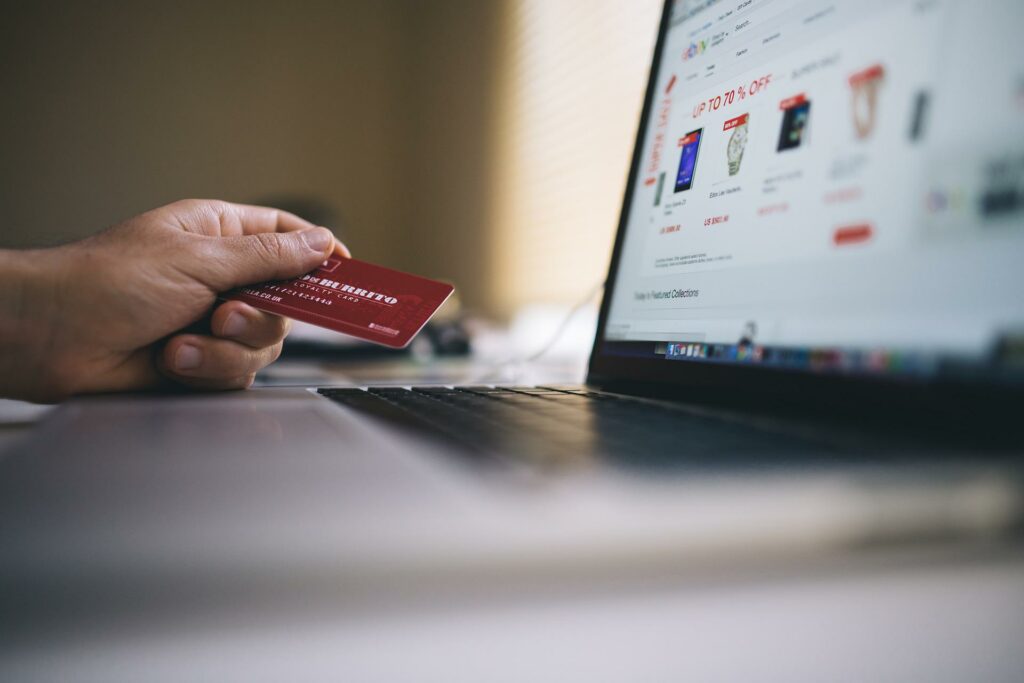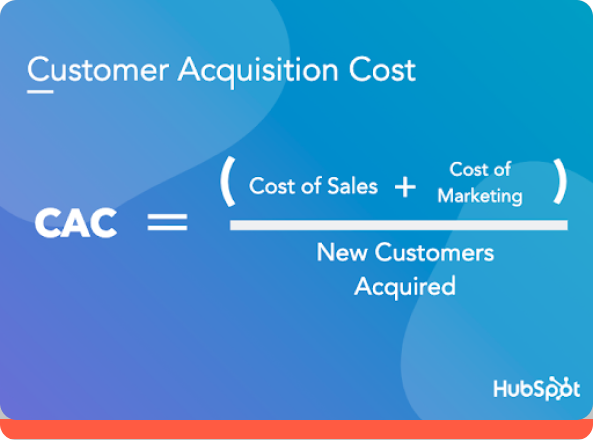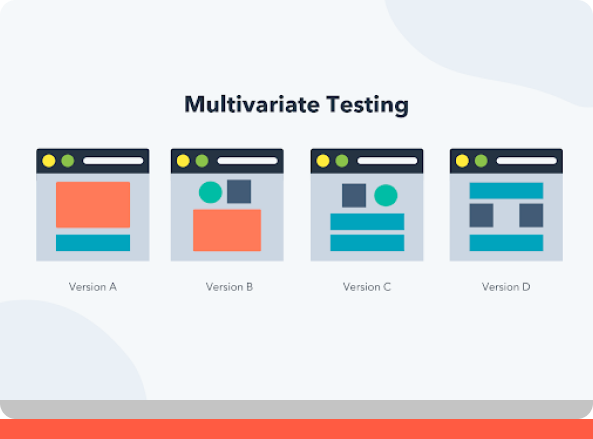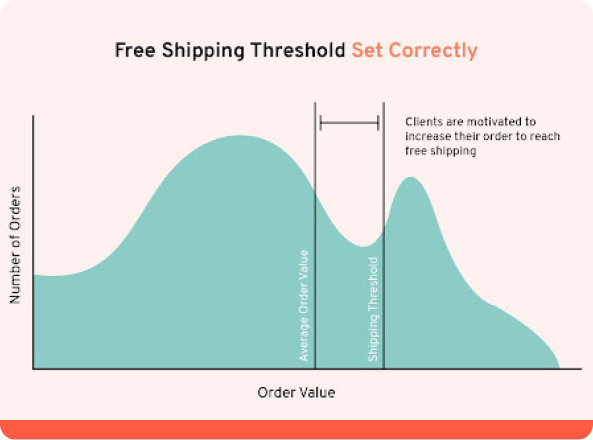


Generating traffic and converting visitors into customers is the top priority of ecommerce businesses. You can spend thousands of dollars on traffic generation, but if traffic doesn’t convert, you’ll end up with a poor ROI. Optimizing your ecommerce business for conversions and sales is the best way to capitalize on the traffic. Ecommerce CRO isn’t optional or a matter of choice, rather, it is necessary.
Marketing is just one part of the puzzle for ecommerce businesses. Generating targeted traffic and running campaigns on all the leading marketing and advertising channels guarantees traffic but not conversions. Optimizing your store and all the marketing channels you are using brings a real change in sales and revenue.
This ecommerce CRO guide covers everything you need to know about conversion optimization, why it’s essential for ecommerce businesses, conversion rate optimization process, techniques, and much more.
Ecommerce conversion rate optimization (CRO) refers to optimizing your ecommerce store for conversions and sales, which is systematically increasing the percentage of visitors who visit your store, act, and take a positive step. The desired act could be adding a product to the cart, creating an account, signing up for the newsletter, adding a verified payment method, or any other action.
It is important to understand conversion and conversion rate to see how ecommerce CRO fits in.
A conversion is when a visitor clicks somewhere on your website to complete a goal. The conversion happens whenever a visitor performs the action you want. For instance, adding a product to a cart is a conversion because the visitor in your store acted positively.
Conversion rate is the percentage of visitors who take the desired action on a website. It is calculated by dividing the total conversions by the total number of website visitors.
A conversion rate of 5 percent, for instance, means five out of 100 visitors convert ( take the desired action). You can set any goal as a conversion for your store and measure its conversion rate. A high conversion rate is desirable since it shows your store is doing a good job of converting visitors.
In ecommerce, a sale or adding a product to the cart is a conversion. Improving your ecommerce store’s conversion rate is known as conversion rate optimization (CRO).
If your store is converting at 1 percent, you can use ecommerce CRO techniques to increase the conversion rate to 2 percent This means doubling your sales with the same marketing budget and traffic. This is what makes conversion rate optimization essential for ecommerce businesses of all sizes.
What makes ecommerce CRO important and why do you have to redesign to optimize your store for conversions? The following benefits of ecommerce CRO have the answer.
An increase in sales and revenue is the main benefit of conversion optimization for ecommerce businesses. Each conversion in a sales funnel is a step closer to purchase. Here is what an ecommerce conversion funnel looks like.
Optimizing the conversion rate for each funnel stage means you are pushing more visitors toward the bottom of the funnel (by reducing funnel leakages); this eventually increases sales and revenue.
As much as 35 percent of marketers consider sales as a conversion. In such a case, conversion optimization means optimizing sales.
Let’s take a hypothetical example:
Your store has a conversion rate of 2 percent, and you receive 100 visitors who purchase the only product available (@$10 each). The numbers look like this:
Total visitors = 100
Conversion rate = 2%
Total revenue = 2 x $10 = $20
Here is how an increase in conversion rate from 2 percent to 5 percent impacts sales and revenue:
Total visitors = 100
Conversion rate = 5%
Total revenue = 5 x $10 = $50
You can generate more sales and revenue with the same traffic by optimizing conversions.
The cost of acquiring a new customer reduces significantly when you improve your conversion rate. A major contributor to the CAC is marketing cost because traffic generation requires marketing efforts.

Conversion rate optimization helps you convert more visitors into customers without spending more money on marketing. As discussed above, you can generate more sales and acquire new customers with simple ecommerce conversion rate optimization techniques.
Yes, CRO also costs money, but it is negligible when compared to marketing cost to acquire the same number of customers. For example, a conversion rate increase from 1 percent to 2 percent is much more cost-effective than doubling your website’s traffic (that means increasing the marketing budget 2 times).
A lower CAC is ideal for your ecommerce business as it increases customer lifetime value and improves the business model.
The impact of conversion rate optimization for ecommerce runs throughout the customer lifecycle, and it continues to benefit your business for years to come.
Conversion rate optimization strategies rely on data. You need to run experiments, A/B tests, and create and test data-driven hypotheses. It requires behavior analysis of visitors and understanding the customer and visitor journey via heatmaps, session recordings, scroll maps, and other behavioral analytics.
Data is pretty much everything in today’s digital economy. It helps you understand your audience and customers. According to Google, 92 percent of marketers believe using data to understand consumers is a key to business growth, and 58 percent of marketers consider first-party data a strategic asset for their businesses.
You can use data from conversion rate optimization experiments to improve UX (user experience) and marketing across all the channels.
Ecommerce CRO is all about improving user experience. The idea of CRO is to make it easy for visitors to take action, convert, and solve their problems as quickly as possible.
For example, when you make the call to action (CTA) prominent, you are improving UX, or when you offer guest checkout, you are improving UX. When you add 360-degree product images, you are helping ideal customers in decision-making, and so on.
UX, in return, improves the search engine visibility of your store. UX improvement increases session duration, reduces bounce rate and dwell time, improves website load speed, and boosts several key SEO factors.
The best thing about ecommerce CRO is that it provides you with a competitive edge.
How?
By creating a sustainable business model that continuously invests in CRO. The data and data-driven decisions you make meet the three requirements of competitive advantage:
The ecommerce conversion rate optimization techniques and tools you use aren’t rare and valuable but the data you generate via the CRO process is rare, valuable, and inimitable. Data is known as the new currency and rightly so because data drives the world we live in.
But data saved in a server means nothing and has no value. The value of data lies in its usage in decision-making. This is exactly what you do in conversion rate optimizations.
Let’s move from theory to practical: How to do conversion rate optimization for ecommerce.
CRO is a 5-step process that has the following stages:
Let’s get to the nitty-gritty and explore each step in detail:
Data collection and analysis initiate the CRO process are first.
A research-backed hypothesis delivers meaningful outcomes and you are least likely to end up with a failed A/B test. Instead of following best practices for CRO and creating judgment-based tests, you need to spend ample time on data collection and analysis.
Data lets you analyze interactions with your retail store that help you create hypotheses. There are two types of data that you can use for analysis:
It is the data you collect specifically for CRO purposes such as surveys and interviews. Primary data could include both qualitative and quantitative data.
Gathering primary data is expensive but it is more accurate and meaningful. It lets you measure what you want to measure with high reliability and validity.
For example, you can conduct interviews with existing customers and ask exact questions that help you better understand your variable.
Here is a list of the primary data collection methods.
It is the data that’s already collected and is available for use such as Google Analytics data and ecommerce metrics. Secondary data is cheap (usually free) and available instantly. However, it isn’t as accurate as primary data.
Data and reports from Google Analytics are extremely helpful in understanding how visitors interact with your website. And this helps you in creating a data-driven hypothesis.
The top sources of secondary data for ecommerce businesses include:
Data from primary and secondary sources go toward creating a hypothesis. The reason why you must spend a good amount of time and resources in research, data collection, and analysis is to ensure you create a well-thought-out and data-driven hypothesis.
The success of your CRO process depends on the hypothesis development phase.
A hypothesis is a prediction or proposition you create before running an experiment. Since it is a prediction, therefore, it can’t be based on judgment. It must be data-driven (a reason why you need to spend more time on research).
A good hypothesis for CRO experimentation should have a:
Here is an example of how to create a hypothesis.
So, it is a statement that is clear and testable with a variable, result, and rationale. If you have done your research, you can justify hypothesis creation with data and strong arguments.
Here is a hypothesis statement based on the above template:
“If we move the CTA button above the fold, then it will increase CTR and thus conversion rate due to the fact that heatmap shows 45 percent of visitors don’t scroll past above the fold.”
A well-crafted hypothesis with a rationale ensures you have a sound basis for experimentation.
Once you have a hypothesis ready, you can proceed with the A/B test by implementing the desired changes and then splitting the traffic evenly between two variations.
However, if you are heading in the right direction, you should have multiple hypotheses and testing ideas in the pipeline for your ecommerce business. Each A/B test requires a certain amount of minimum traffic and it is unwise to run multiple tests simultaneously. You need to prioritize A/B testing.
Prioritization of your testing ideas simplifies experimentation and makes it meaningful and logical. Setting prioritizing lets you test the right idea first with high potential.
How to do prioritization?
You can use prioritization frameworks like PIE or ICE to pick the right testing idea based on its potential and importance.
It is one of the most used prioritization frameworks in conversion rate optimization. It uses the following three criteria to prioritize test ideas.
You need to rate all the pages for these variables. Give a score to each page out of 10 (seven or five) and then calculate the mean for the three variables for the PIE score. The test ideas with the highest PIE score should be your priority.
It is another prioritization framework that’s used by a lot of leading marketers. It is a simple scoring method like the PIE framework but it has different criteria:
List all the page and test ideas, give a score to each page out of 10, and then multiply the three scores to find the ICE score. The pages with the highest ICE score should be your top priority for A/B testing.
Both these frameworks require some level of judgment and guesswork. For example, potential, importance, impact, and confidence are subjective criteria. The best approach is to involve multiple team members in the scoring process and then take the mean for all the scores to avoid subjectivity and biases.
You can use any of these two frameworks to prioritize pages and testing ideas and move to the next step of the CRO process.
This is the experimentation stage. The first thing you need to do is identify the right test type for your hypothesis.
A/B testing (also known as split testing) is a type of experimentation that shows two variations of a feature to the visitors at the same time to find the better performing version. The feature could be a webpage, an element on a page, or anything else you want to test.

It is the most popular type of test for CRO in ecommerce. You need to create a variation of the original version of the page (known as control) and then run the A/B test. The version that increases the conversion rate or the metric you are measuring (derived from your hypothesis) is termed the winner.
Ideally, you need to change one variable at a time to understand the test results. In most cases, you’ll use A/B tests for your ecommerce store since they’re relatively straightforward to create and run.
Multivariate is a test type that lets you measure multiple variables and see how the combinations of different variables perform together. For example, when you want to identify the best performing combination of product title and product image.
Multivariate testing is ideal when you want to redesign a page or several items on a single page. It saves you from running several split tests by testing one variable at a time. You can test all the combinations and versions in a single go with multivariate testing.
However, it requires a lot of website traffic to test all the versions. And this is one reason why most businesses don’t prefer multivariate tests: They don’t have enough traffic so it gets hard to reach statistical significance.
Running a test for too long or too short has a direct impact on the result. As different versions receive traffic constantly, the results keep changing. Knowing when to stop the test is essential to getting a consistent and generalizable result.
There are two key factors that determine the duration of your A/B tests:
Your testing tool can help you find the right test duration with a simple formula, and it will show you when to stop the test for an accurate result.
Learning is the stage when you need to analyze the test results. The two possible outcomes of any A/B test are:
You accept your hypothesis when the variation has won and the test was successful. This means your expected change resulted in the desired outcome. In this case, you need to implement the change in the control.
It’s important that you need to learn and understand the outcomes to apply on other pages throughout your ecommerce store. If you don’t understand the test result or it turns out to be something other than what you expected, you need to do another test to get more meaningful insights.
When your hypothesis fails and the variation loses, this is a situation where you need to dig deep and figure out why your hypothesis didn’t work. Here are a few essential things to look for when variation loses:
If you did everything correctly, create a new hypothesis based on the results and rerun the A/B test. A failed test doesn’t mean you failed, rather, it means you need to retain the original version and develop a new hypothesis.
User psychology and behavior drive conversion rate optimization. You can use behavioral psychology principles along with other techniques and proven tips to supercharge ecommerce conversion rate optimization.
Here is a list of the best techniques to boost conversions, sales, and revenue throughout the funnel:
Page speed has a direct impact on conversion rate. This should be the first thing you need to do to improve the conversion rate of your ecommerce store.
Research shows that an ecommerce site that loads in 1 second has a 2.5x higher conversion rate than a site that loads in 5 seconds and for every second delay in mobile website load time, the conversion rate drops by a whopping 20 percent.
The time your store takes to load also impacts the bounce rate. A page that loads within 2 seconds has an average bounce rate of 9 percent while pages that load within 5 seconds have bounce rates as high as 38 percent.
Pages and sites that load in 1 second have the highest ecommerce conversion rate.
The science behind site load speed and conversion rate makes sense because the time your site and its pages take to load impacts user experience.
As much as 70 percent of people say the time a website takes to load influences their buying decision from an ecommerce store and 50 percent of people say they’re willing to give up animation and video for a quick site load time.
Nobody likes waiting for a website to load. Your audience has a lot of options to choose from. They can easily switch to another site. Improving your ecommerce site page speed is a sure way to boost conversion rate, sales, and UX.
Product images are essential for conversions and sales. The quality of the product images is a key factor that you should give importance to.
A study by Weebly revealed interesting findings about product images for ecommerce and retailers: 75 percent of ecommerce buyers say product images are very influential when they’re deciding to buy a product and 22 percent of products were returned because the product looked different from the product photo.
The quantity of product images is also critical for conversions and sales. A study found that 58 percent of people prefer seeing product photos that give them a complete 360-degree view of the product and 33 percent want to see multiple product photos while only 0.52 percent of ecommerce shoppers want to see a single product image.
The idea is to make products touchable and interactable for your audience. And the best way to do it is by having product images from all possible angles. A study found that people assume themselves using the product when they see it online so product images that relate to this mental simulation are more likely to be liked, clicked, and purchased.
Adding multiple product images promotes this response and leads to a high conversion rate.
This might sound evil, but free shipping is the most important conversion factor for your ecommerce business. Free shipping is the number one incentive that ecommerce buyers are interested in. You can easily boost sales (and conversions) by offering free shipping.
High shipping cost is the number one reason for cart abandonment and 58 percent of consumers are willing to spend enough money to qualify for free shipping.
Consumers are in love with free shipping even at the cost of adding more items to their cart:
Your ideal customers are willing to pay more for free shipping or else they’ll leave. This clearly shows how you can boost conversion and sales for your ecommerce business.
Offer free shipping.
You need to set the minimum cart value correctly to increase the average order value. This is tricky because there isn’t a universal best free shipping threshold. And this is where you need to run a CRO campaign.

Create a hypothesis and run an A/B test to find the optimal free shipping threshold for different product categories for your store.
Customer reviews and testimonials are an important form of social proof that is likely to increase the conversion rate by 34 percent and 84 percent of people trust online reviews as much as personal recommendations from friends.
Adding customer reviews to your ecommerce store can lift conversions by 120 percent.
User-generated social proof is best for generating sales and conversion. Here are the best scientifically proven tips to make your reviews credible:
Adding these social proof and customer review features to your ecommerce website will help you boost conversions, engagement, and sales. Of course, it further requires testing and tweaking.
It is a psychological principle to change the behavior of your target audience. Urgency persuades people to take the desired action and act now when they’re faced with an urgent task.
This is known as the Mere Urgency Effect, which defines how people make decisions in their daily lives. Generally, people tend to do an urgent task with a short completion time as opposed to an important task with a longer completion window.
Here is an example of how to do it.
You can use this principle to influence the behavior of your audience. Here are a few simple ways to create a sense of urgency for your ecommerce store and drive conversions:
These tactics to create a sense of urgency must be used with caution. Don’t create forced scarcity and urgency. It needs to be real. If you have a countdown timer set to expire in three hours, it must expire in three hours – and not just set to repeat in a loop.
A/B testing will help you find the right sense of urgency that works best for your ecommerce business. Test each one of them one by one to find a winner.
The scientifically backed CRO techniques are a good starting point for the optimization of your ecommerce business. You need to run several ecommerce CRO campaigns to find the best variation.
For example, adding multiple product images on the product page increases conversion rate but what type of images outperform, what quality and quantity of images do your target audience prefer, how many 360-degree images to add, etc.
The same goes for other techniques.
CRO for ecommerce is a never-ending process. It should be a part of your ecommerce marketing strategy. Not sure how to create and integrate your CRO strategy for your ecommerce business? Get in touch with us for a CRO audit, and we’ll let you know how to skyrocket conversions.